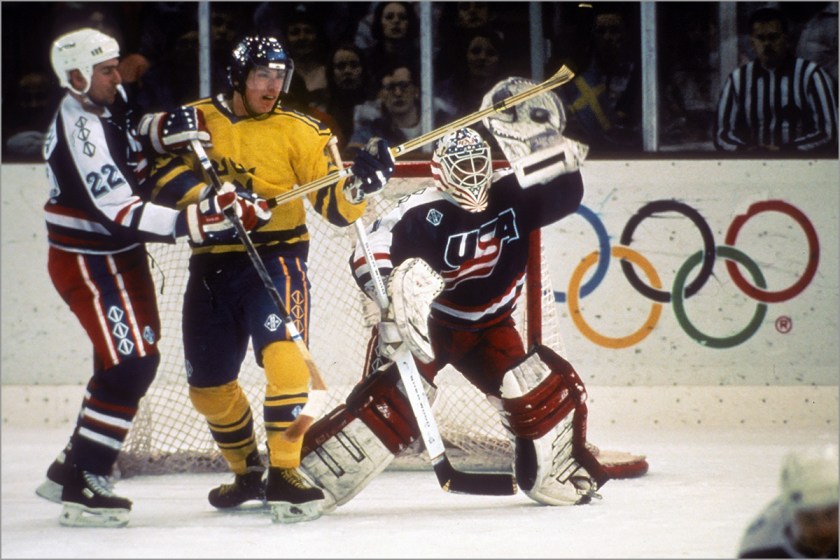
After the U.S. rocked the hockey world at the 1980 Olympics with its “Miracle on Ice” win over the Soviet Union and subsequent gold medal victory, Americans hoped for a repeat. It wouldn’t happen that decade, though, as the U.S. finished 7th out of 12 teams in 1984 and again in 1988.
While the U.S. team may have been projected to be a doormat at the 1992 Olympics, the team proved the world wrong. Led by goaltender Ray Leblanc, an unlikely hero between the pipes, the ’92 team was the U.S.’s “Near-Miracle on Ice” – a team that was unstoppable in its first six games, only to be halted by the tournament’s eventual champion.
Part I – The Long Road to Méribel

Bret Hedican | #24 | Defense
I had a really good junior year at St. Cloud State University. I was on spring break, of all things, and I got a call from my parents. They said USA Hockey called, and that they wanted me to represent the Americans in Russia for a tournament called the Pravda Cup. I was blown away. I never – not once – had been asked to represent the United States in any national tournament. I had four of the best games of my life. I gave everything I had, because I knew it was my chance of a lifetime. The coaches were Dave Peterson and Dean Blais, and they asked me to try out for the National Team. I left college my senior year to make the National Team, in hopes to make the Olympic Team.
David Emma | #10 | Forward
After I won the Hobey [Baker Award, as the NCAA’s best player], I went right to the tryouts.
Shawn McEachern | #15 | Forward
We had tryouts in the summertime. That’s the way it worked with the Olympic teams back then. You went to tryouts for the National Team, and then you played for the National Team. And then you’d play a season against some NHL teams and some college and minor league teams. And then, just before the Olympics, they cut it down. We traveled around for about six months with the National Team.
Keith Tkachuk | #17 | Forward
This was before I was a professional. Because I was so young, 19 years old, I wasn’t expecting to make the team. I guess I had a good tryout. I was already enrolled to go back to school that fall, but luckily, I made it, and kept on making it, and got to go play in the Olympics.
Continue reading “The Near-Miracle on Ice: An Oral History of the 1992 U.S. Olympic Hockey Team”








![Mark Gessner of IFC's comedy "Benders" [Photo by Patrick Harbron]](https://i0.wp.com/puckjunk.com/wp-content/uploads/2015/10/dickie_01.jpg?resize=840%2C601)
 Sal Barry: I’ve really enjoyed “Benders” so far. I play beer league hockey, and the jokes really hit home.
Sal Barry: I’ve really enjoyed “Benders” so far. I play beer league hockey, and the jokes really hit home. 

![[Photo by Mark Buckner / St. Louis Blues]](https://i0.wp.com/puckjunk.com/wp-content/uploads/2014/11/jake_allen_blues.jpg?resize=508%2C650)